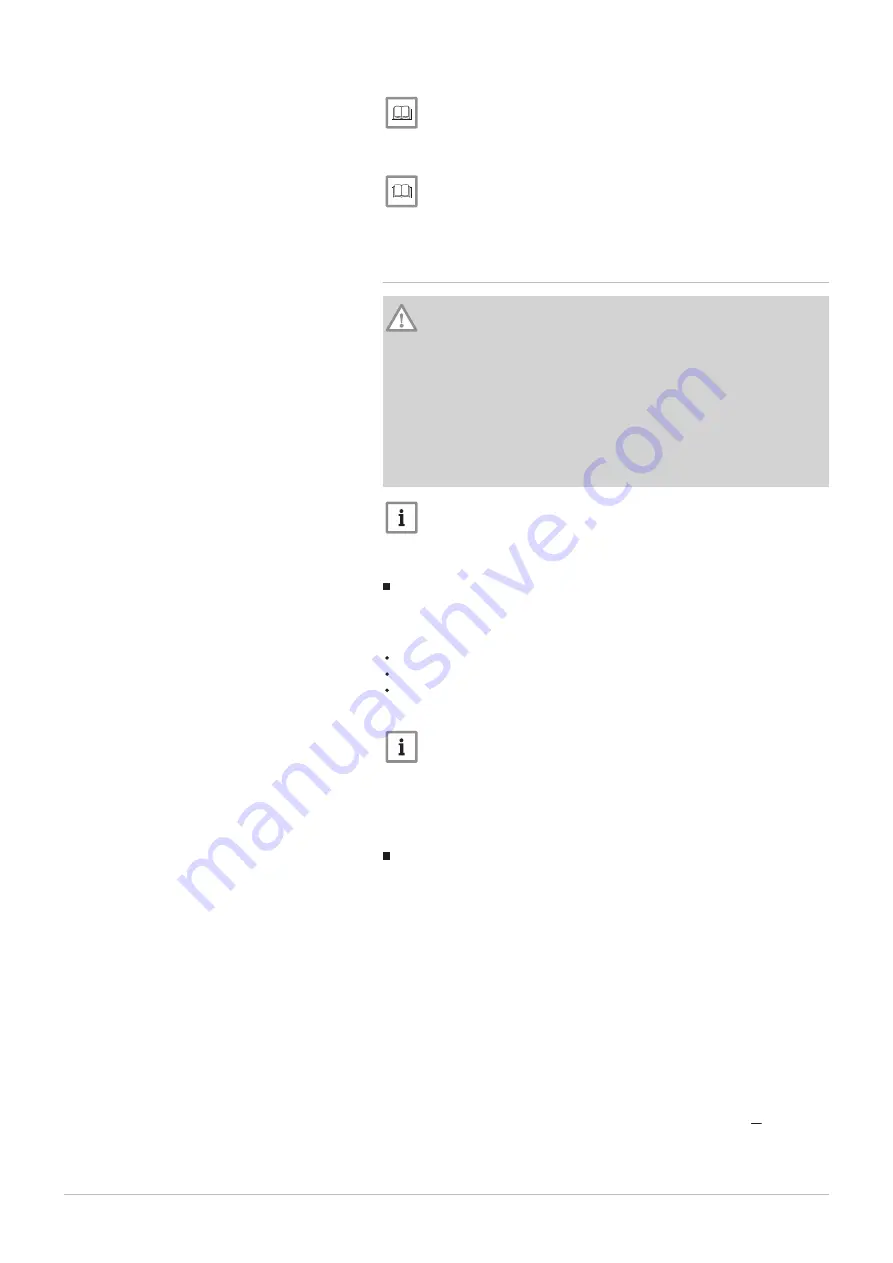
See
More information can be found in the
Technical information
Exhaust gas line lengths for cascade systems
See
A table of permissible flue gas pipe lengths for cascade systems
can be found in the
Technical information
. A calculation by
Potterton is required for installations deriving from this.
6.5.3
General information about the flue gas piping system
Caution
Risk of property damage!
The chosen flue gas path should be as short as possible. Flue gas
pipes must be laid on an incline towards the chimney with an air-
tight seal. The smaller diameter flue gas pipe must be fitted into
the flue gas connection piece on the boiler so that any
condensation cannot escape. The chimney must be designed in
compliance with DIN 18160 and take the technical data in DIN EN
13384 into account as regards dimensions. If the flue gas
temperature is below 160 °C in continuous operation, a
conventional chimney must not be used.
Important
The flue gas temperature can be changed by changing the burner
capacity. Installation of a draught limiter is recommended for
excessive chimney draught (> 3 mm WC).
Standards and regulations
Besides the general technical rules, the following should be particularly
observed:
Regulations of the accompanying certificate of approval
Implementation rules of the DVGW-TRGI, G 600
Planning laws of the German federal states in accordance with the
Combustion Ordinance and the building regulations
Important
Due to the different regulations in the individual federal German
states and working (flue gas evacuation, cleaning and inspection
openings etc.) varying from region to region, the district chimney
sweep officer responsible should be consulted before assembly is
started.
Contaminated chimneys
Combustion of solid and liquid fuels generates deposits and pollution in
the respective flue gas tract. Soot contaminated with sulphur and
halogenated hydrocarbons sticks to the inside walls. Such flue gas tracts
are not suitable for the combustion air supply of heat generators without
pretreatment. Contaminated combustion air is one of the main causes of
corrosion damage and malfunctions on fuel-burning installations. If the
combustion air has to be drawn via an existing chimney, this flue gas tract
should be inspected by the district chimney sweep officer responsible and
cleaned if necessary. Should structural deficiencies (e.g. old, broken
chimney structures) oppose its use as a combustion air supply duct,
suitable measures such as shake-out of the fireplace should be taken. It
must be ensured that there is no contamination of the combustion air with
foreign matter.
If an appropriate clean up of the existing flue gas tract is not possible, the
heat generator can be operated on a concentric flue gas pipe independent
of ventilation. The concentric flue gas pipe must run straight in the shaft.
6 Installation
7703301 - 01 - 16072018
43
















































